What Is Claim Adjudication? - Understand the Role of it
- August 15, 2025
- 0 Comments
- Claims Submission
In medical billing, adjudication is the process insurance companies use to decide if they will pay a claim, and how much they’ll pay. It happens after you submit the claim, and before the payment is released.
When a claim reaches the payer (like Medicare, Medicaid, or a commercial insurer), their system runs checks to make sure the service was covered, properly documented, and billed correctly.
Think of adjudication as the insurance company’s way of reviewing the claim line by line. They check:
• Was the patient covered on the date of service?
• Was the service medically necessary?
• Is the provider in-network or out-of-network?
• Did the coding and modifiers match the documentation?
• Was prior authorization obtained, if required?
Based on these checks, the payer will make a decision to:
• Pay the claim in full
• Pay a reduced amount
• Deny the claim
You’ll receive the outcome in the form of an ERA (Electronic Remittance Advice) or EOB (Explanation of Benefits), which shows the payment decision, adjustments, and any denial codes if applicable.
Adjudication is one of the most important parts of the revenue cycle because it directly affects how fast and how much you get paid. A clean claim can pass through in days. A flagged one might left unresolved for several weeks or be denied altogether.
Key Steps in the Claim Adjudication Process
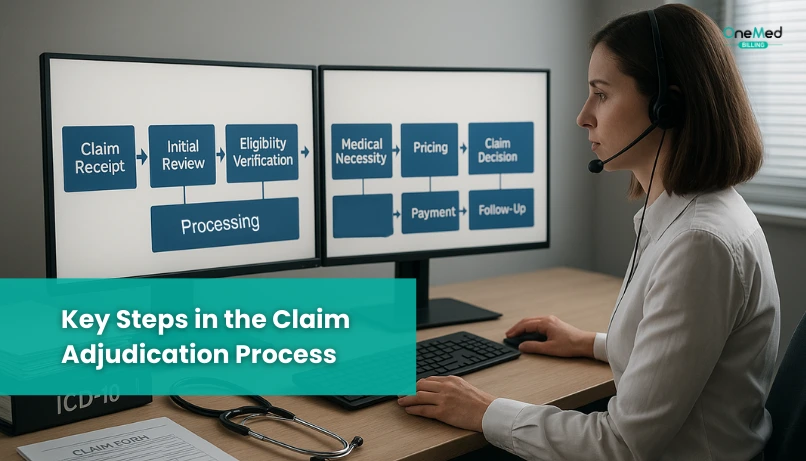
Claim adjudication is where the insurance company decides whether to approve, deny, or adjust a claim. Knowing how this process works helps providers catch issues early
1. Initial Review
Once a claim reaches the insurance company, it goes through an initial check. This step ensures that all basic information is present and accurate. Things like the patient’s name, date of service, diagnosis codes, and procedure codes are reviewed. If anything is missing or incorrect, the claim may be rejected right away. If everything looks correct, the claim moves to the next stage.
2. Automated Review
In this step, the claim is scanned by the payer’s software system. The system checks if the service needs prior authorization, whether the procedure matches the diagnosis, and whether the claim was filed within the allowed time window (typically 90 to 120 days). Claims that are clean and complete usually pass through this step quickly. However, missing pre-auth numbers or mismatched codes can trigger a denial or require further review.
3. Manual Review
If something in the claim seems unusual or complex, it gets flagged for manual review. This means a claims processor will look at it more closely. They may review the clinical notes, documentation, and medical necessity. Manual reviews usually take more time and are more likely to result in denials if supporting documents are weak or missing.
4. Payment Determination
After all reviews are complete, the insurer decides what they will pay, if anything. They may approve the full amount, approve a reduced amount, or deny the claim completely. The decision is based on the patient’s plan benefits, coverage limits, coding accuracy, and whether proper steps (like authorization) were followed.
5. Remittance Advice (RA) Sent
Finally, the provider receives a remittance advice (RA) or explanation of benefits (EOB). This document shows what was paid, what was denied, and why. It includes denial codes and adjustment reason codes that explain any payment reductions. This is the provider’s chance to review, appeal, or correct and resubmit the claim if needed.
How Adjudication Affects Your Revenue Cycle
When the adjudication process takes longer than expected, your payments get delayed. Even if your practice provided the service weeks ago, you won’t see the money until the insurance company finishes reviewing the claim. These slowdowns can quickly pile up and cause serious cash flow problems, especially for busy practices or those with tight operating budgets.
Delays aren’t the only issue. If the claim has problems, like wrong codes, missing documents, or eligibility mismatches, the insurance company may deny it or mark it for correction. Your billing team then has to fix and resend it, which takes more time and effort. These repeated issues can cause your Accounts Receivable (AR) to age, making it harder to collect the full amount. Over time, this can seriously affect your financial health and slow down the entire revenue cycle.
Reasons Claims Fail During Adjudication

Claims often fail during adjudication for a few common reasons. Sometimes the patient’s insurance coverage has expired or doesn’t include the service provided. In other cases, the diagnosis and procedure codes don’t match according to the payer’s rules. A claim may also be denied if the payer decides the treatment was not medically necessary under their guidelines. Coordination of benefits errors can cause problems when a patient has more than one insurance plan and the payer order is incorrect. Missing prior authorizations or pre-approvals are another frequent cause of claim failure, especially for services that require advance approval before treatment.
What Happens After a Claim Is Adjudicated?
Once the decision is made after the adjudication process, that outcome is communicated to your practice in one of two main ways: ERA (Electronic Remittance Advice) or EOB (Explanation of Benefits).
The ERA is a digital file sent directly to your practice. It includes standardized codes that explain how much was paid, why a claim was denied or adjusted, and whether any balance remains. Most billing software systems are designed to read ERAs automatically, so payments and denials can be posted quickly and with fewer errors. This speeds up reconciliation and helps you act fast if there’s a problem with the claim.
The EOB is a document usually sent to the patient. It explains the same outcome, but in simpler, more readable language. It shows what was billed, what the insurer paid, what was denied, and how much the patient may owe. This helps patients understand their financial responsibility and reduces billing confusion on their end.
Sometimes, providers may receive EOBs too, especially for smaller or out-of-network payers that don’t support ERAs.
Conclusion
Adjudication is where your revenue gets approved or denied. It’s that simple. If your claims are clean, timely, and properly coded, payments move faster. If not, you’re stuck chasing denials, resubmitting claims, and losing money.
Understanding how adjudication works is essential to protecting your bottom line. The more proactive you are, the fewer payment delays and surprises you’ll face.
If keeping up with claims is wearing you down, a medical billing company can step in and handle the rest for you.
Frequently Asked Questions
Find quick answers to common questions about this topic, explained simply and clearly.
What is claim adjudication in medical billing?
Claim adjudication is the process insurance companies use to review and decide how much they will pay for a submitted medical claim.
How long does the claim adjudication process take?
Most claims are adjudicated within 7 to 30 days, depending on the payer and whether the claim is clean or needs further review.
What are the steps involved in claim adjudication?
The process includes claim validation, policy checks, medical necessity review, and determination of payment or denial.
Why do claims get denied during adjudication?
Common reasons include missing information, coding errors, eligibility issues, or services not covered under the patient’s plan.
Can denied claims be appealed after adjudication?
Yes. Providers can appeal denied claims by submitting corrected information or supporting documents to the insurer.

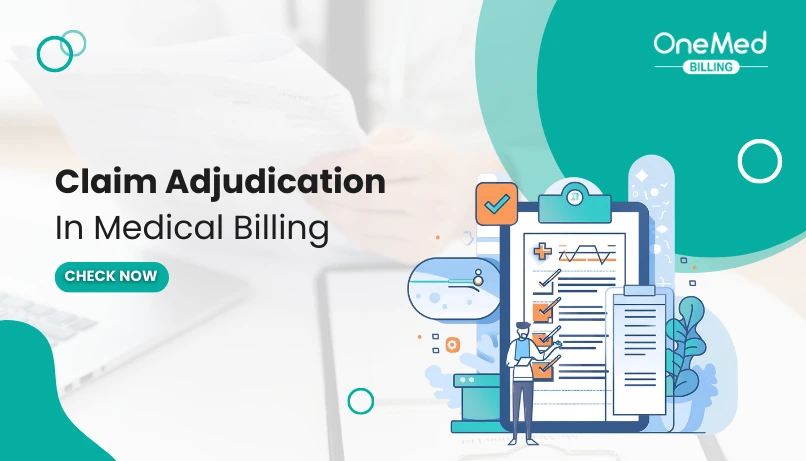
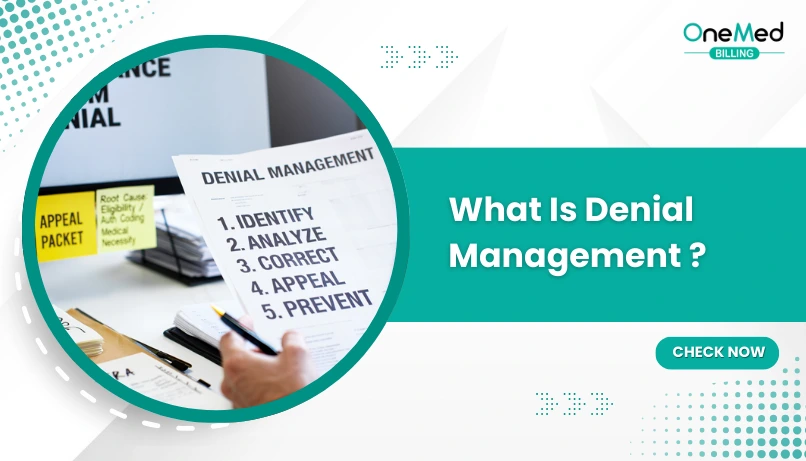
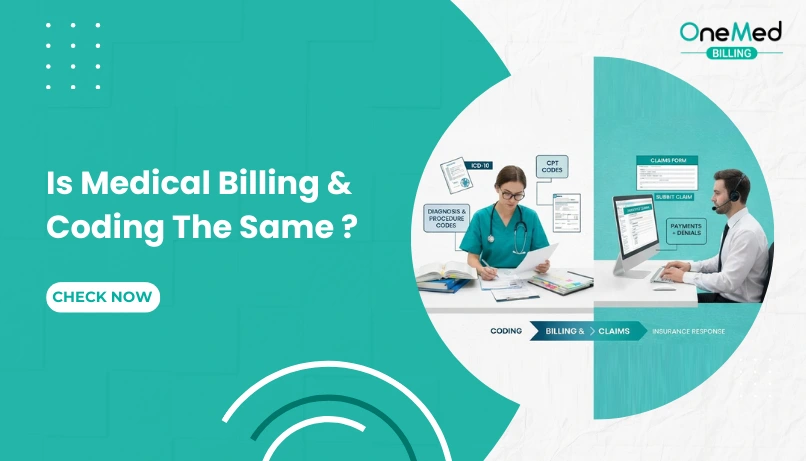
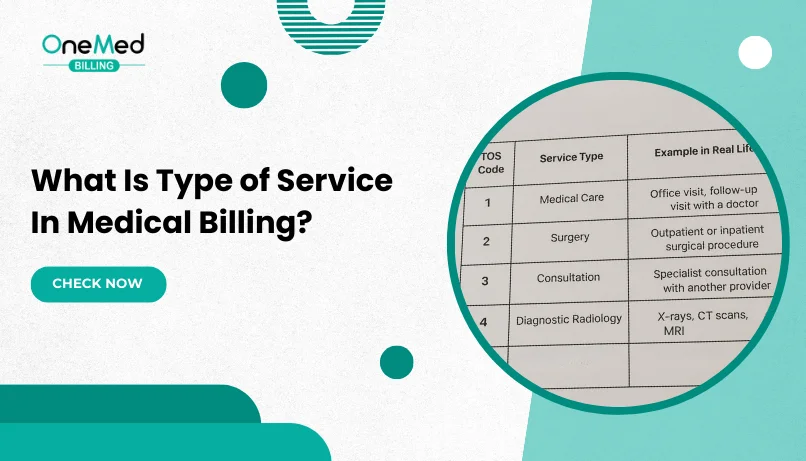
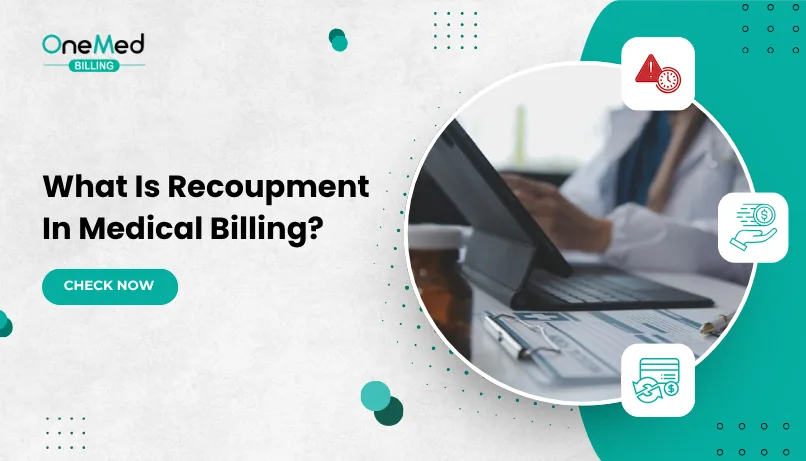

Comments (0)